Sulejów
Sulejów [suˈlɛjuf] is a town in central Poland with 6,272 inhabitants (2016).[1] It is situated in Łódź Voivodeship (since 1999), having previously been in Piotrków Voivodeship (1975–1998). Sulejów gives its name to the protected area known as Sulejów Landscape Park.
Sulejów | |
|---|---|
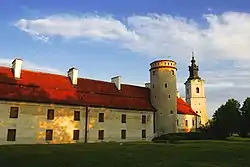 | |
 Flag  Coat of arms | |
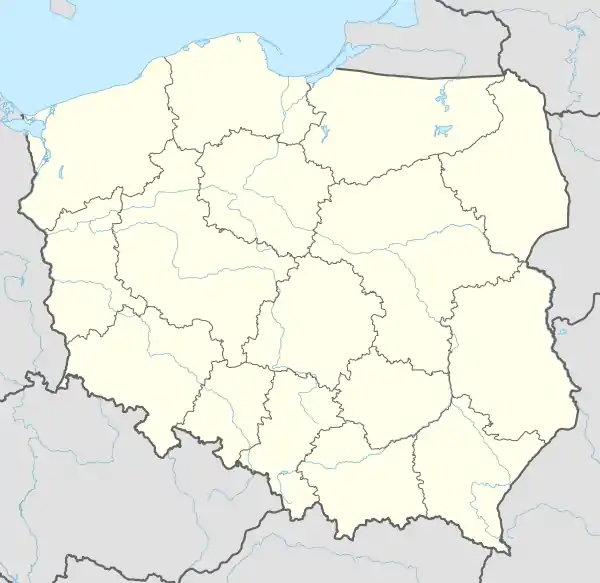 Sulejów 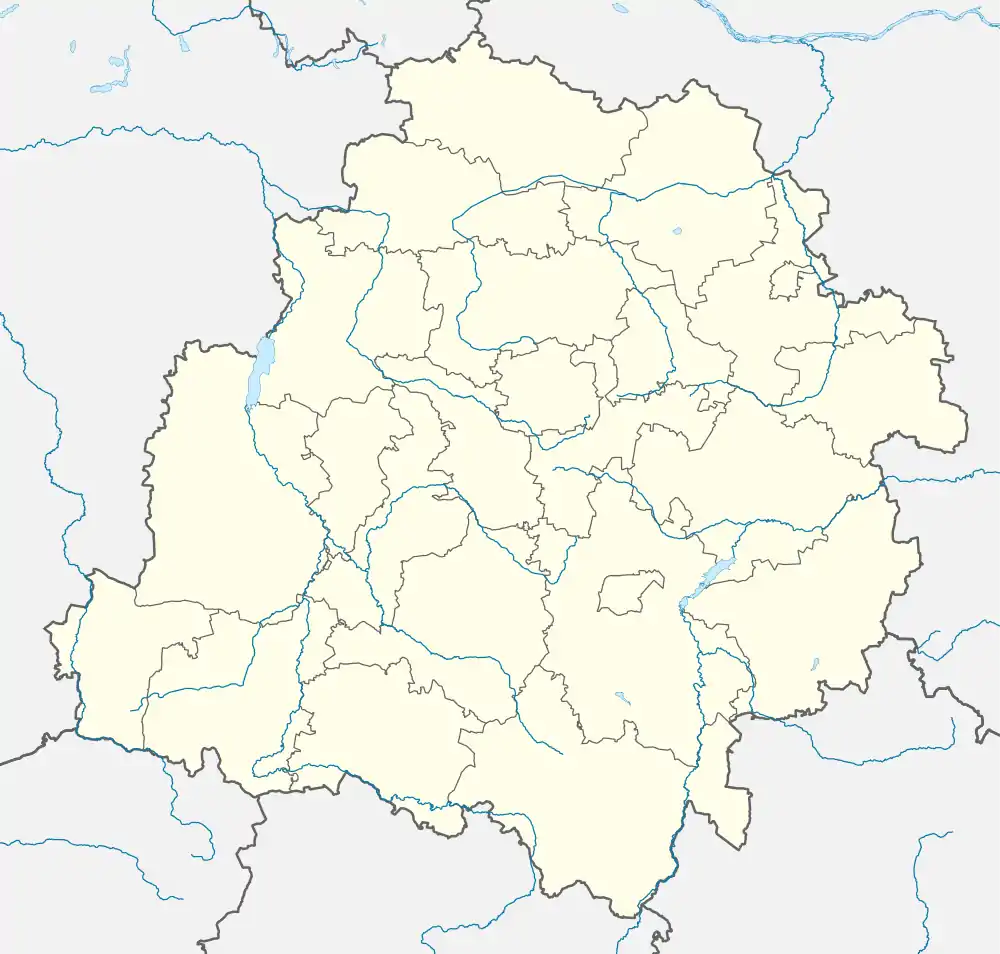 Sulejów | |
| Coordinates: 51°21′10″N 19°53′5″E | |
| Country | |
| Voivodeship | Łódź |
| County | Piotrków |
| Gmina | Sulejów |
| First mentioned | 1145 |
| Town rights | 13th century |
| Government | |
| • Mayor | Wojciech Ostrowski |
| Area | |
| • Total | 26.25 km2 (10.14 sq mi) |
| Population (2016) | |
| • Total | 6,272 |
| • Density | 240/km2 (620/sq mi) |
| Time zone | UTC+1 (CET) |
| • Summer (DST) | UTC+2 (CEST) |
| Postal code | 97-330 |
| Car plates | EPI |
| Website | http://www.sulejow.pl |
The town was partially destroyed by the Luftwaffe in September 1939, causing more than 1000 deaths,[2][3]
History
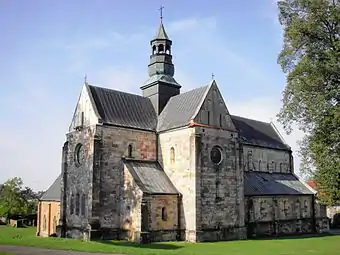
The origins of Sulejów are associated with a village founded near the crossing of the Pilica river in the 12th century. The castle, which later sparked the development of a Cistercian abbey, was built between 1176 and 1177, on the orders of Duke Casimir II the Just. The abbey was constructed in the place which is now called Podklasztorze. Sulejów received its town rights in the middle of the 13th century, later confirmed by King Władysław I the Elbow-high.
A great event in the history of the town was a rally, which took place between 20 and 23 of June, 1318. This rally was the official ceremony of adopting and enacting the papal conditions and the resumption of the Polish Kingdom. A permission request was sent to Pope John XXII for the coronation of Władysław I the Elbow-high. Later Kuyavian Bishop Gerward was sent to Avignon for negotiations.
Sulejów used to be located on the trade routes between Silesia, Wielkopolska and the Kievan Rus'. In 1410 the Cistercian abbey was one of the stopping places for the Polish army, led by King Władysław II Jagiełło. Also Kings Casimir IV Jagiellon and John II Casimir Vasa and several papal legates visited the town.[4]
The town was damaged by the Swedes in 1655 during the Deluge,[5] which caused the collapse of the town. As a result of the Third Partition of Poland (1795), the town was divided between Prussia and Austria.[5] In 1807–1809 it was regained by Poles and included within the short-lived Duchy of Warsaw, and in 1815 it fell to the Russian Partition of Poland. In 1819, the Cistercian monastery was closed. In 1870 Sulejów was deprived of its town rights by the Tsarist administration, as one of many towns punished for the Polish January Uprising. After World War I, in 1918, Poland regained independence, and in 1927 town rights were restored, which has contributed to the faster development of Sulejów.
Further destruction of the city occurred on 4 September 1939, during the German Luftwaffe bombing. As a result, 80% of the buildings, including the Old Town, were destroyed. That day almost 1,000 people lost their lives. The town then fell under German occupation until 1945. In mid-1940 the German police carried out mass arrests of over 100 Poles, including teachers, judges and students of secret Polish schools.[6]
After World War II, the city was partially rebuilt. In 1986 the Cistercians returned to the newly reopened monastery.
Gallery
 Facade and portal of the Saint Thomas of Canterbury church
Facade and portal of the Saint Thomas of Canterbury church_by_Ron.jpg.webp) Monastery
Monastery_by_Ron.jpg.webp) 19th-century fire station which still operates today
19th-century fire station which still operates today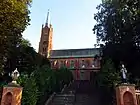 Saint Florian church
Saint Florian church
References
- Population. Size and Structure and Vital Statistics in Poland by Territorial Division in 2016, as of December 31 (PDF). Warszawa: Główny Urząd Statystyczny. 2017. p. 116. ISSN 2451-2087.
- Martin Gilbert The Holocaust Fontana, 1990 ISBN 0-00-637194-9 Page 85
- History of Sulejów
- Słownik geograficzny Królestwa Polskiego i innych krajów słowiańskich, Tom XI (in Polish). Warszawa. 1890. p. 567.
- Słownik geograficzny Królestwa Polskiego i innych krajów słowiańskich, Tom XI, p. 565
- Wardzyńska, Maria (2009). Był rok 1939. Operacja niemieckiej policji bezpieczeństwa w Polsce. Intelligenzaktion (in Polish). Warszawa: IPN. p. 266.
| Wikimedia Commons has media related to Sulejów. |